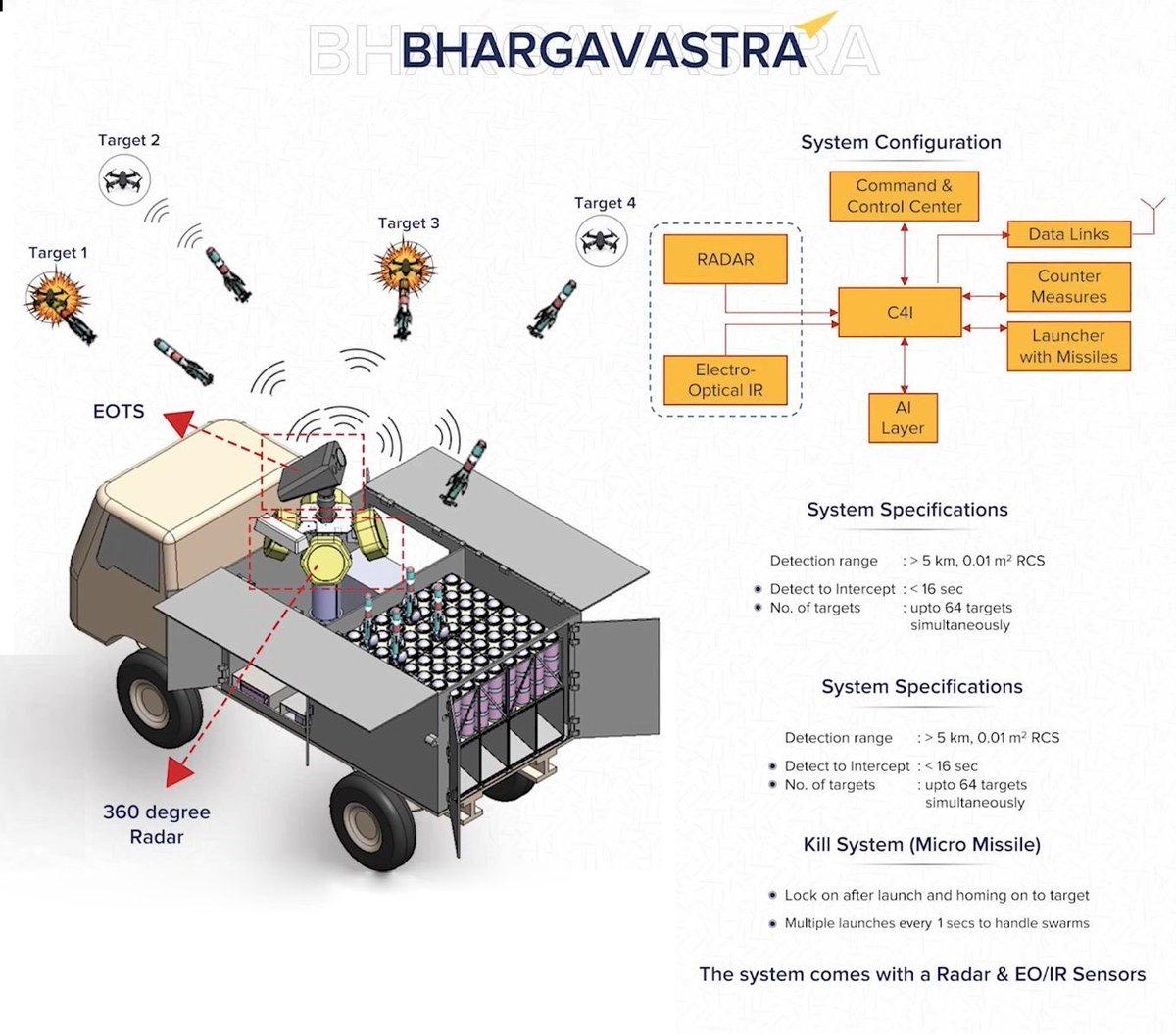Context:
Solar Defence and Aerospace (SDAL) has recently tested a new low-cost counter-drone system in hard kill mode named Bhargavastra at the Seaward Firing Range in Gopalpur. This system aim to provide cost-effective and responsive solutions for the evolving nature of modern warfare, including drone swarms and mobile target environments.
About Bhargavastra:
The Bhargavastra system is India’s First Micro Missile-Based Counter-Drone System developed by Solar Defence and Aerospace Limited (SDAL) in collaboration with Economic Explosives Ltd, represents a breakthrough in counter-drone technology. This low-cost, hard-kill system is designed to detect and neutralize drones, including swarm formations, using guided micro rockets.
Key Features:
- Detection range: Capable of detecting small aerial threats beyond 6 km.
- Engagement range: Effective neutralization of targets beyond 2.5 km.
- Simultaneous firing: Can launch over 64 micro missiles at once.
- Mobility: Mounted on mobile platforms for rapid deployment in diverse terrains, including high-altitude regions.
- Role: Specifically designed for Army Air Defence, filling a vital capability gap. The Indian Air Force has also expressed interest.
This system underwent three successful trials on May 13, 2025, in the presence of senior Indian Army officials. Two of the trials involved single-rocket launches, while the third demonstrated a salvo mode with two rockets fired within two seconds. All rockets met their launch parameters, validating the system’s ability to intercept drone threats effectively.
Bhargavastra addresses a growing global challenge: the proliferation of low-cost drones, especially in swarm formations, which pose continuous security threats and strain traditional air defence systems reliant on expensive missile interceptors.
Conclusion:
India has already witnessed the effectiveness of integrated defence systems in recent conflicts. During Operation Sindoor, the S-400 missile defence system played a pivotal role in intercepting Pakistani drones, missiles, and aircraft along the western border. However, the use of such high-cost missile systems for countering low-cost drone threats is not economically viable long-term.
This operational experience underscores the need for cost-effective, scalable solutions like Bhargavastra. As drones become increasingly accessible and pose asymmetrical threats, India’s ability to deploy affordable, mobile, and precision-guided systems becomes critical.







